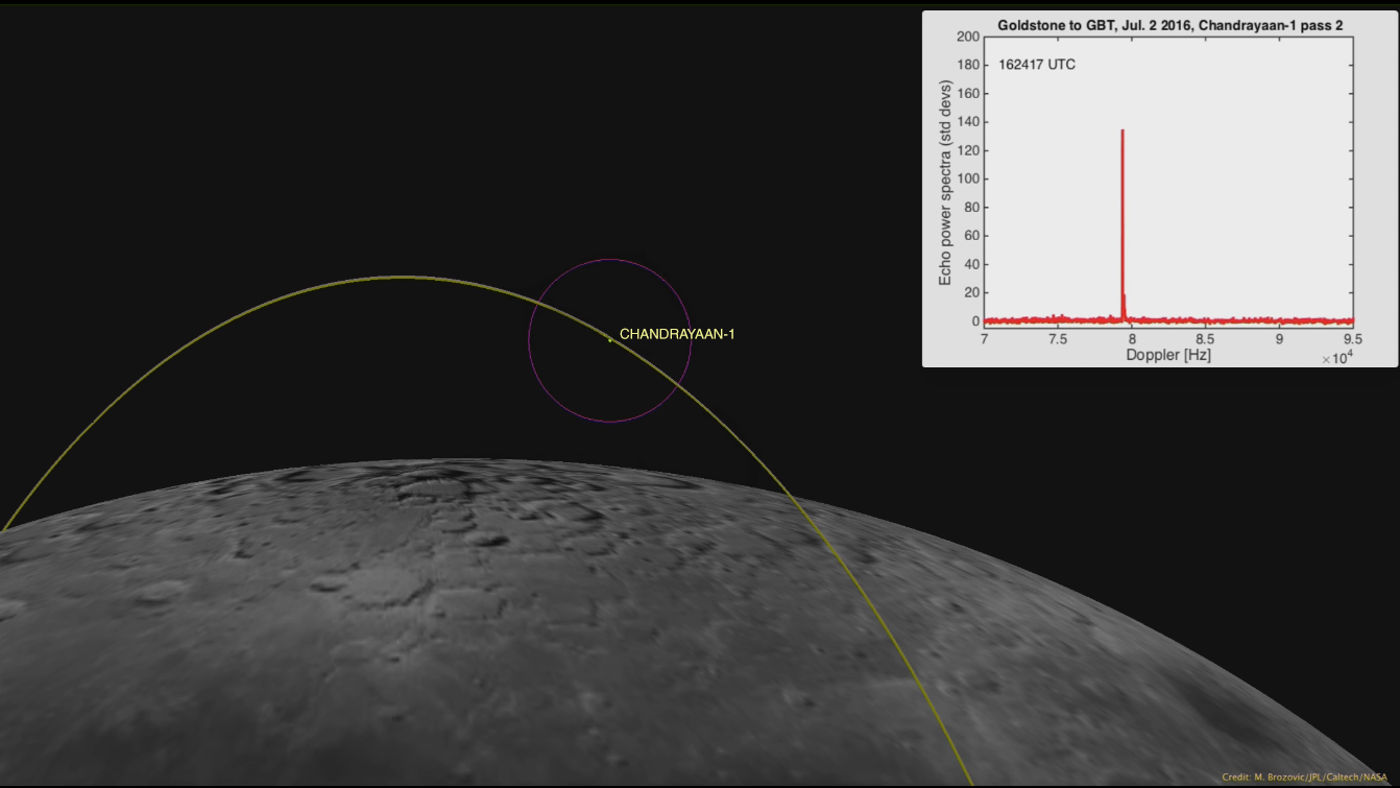 NASA/JPL-Caltech
NASA/JPL-Caltech
India lost contact with its first lunar orbiter, the Chandrayaan-1, back in 2009. Now, NASA has revealed that the agency discovered its location in July 2016 after testing a method that can be used by future lunar missions. Chandrayaan-1 is a relatively tiny cubic probe that measures five feet on all sides, making it the perfect target for the radar experiment conducted by a team of Jet Propulsion Laboratory scientists. The team wanted to find out whether a technique used to observe small asteroids can also spot spacecraft orbiting the moon.
This method relies ground-based radar, because optical telescopes can't see anything against the bright lunar glare. Since Chandrayaan-1 was in polar orbit around the celestial body before it got lost, the team sent a powerful beam of microwaves somewhere above the natural satellite's north pole. They used a 230-foot antenna at NASA's Goldstone Deep Space Communications Complex in California to accomplish the task. But they relied on the 330-foot Green Bank Telescope in West Virginia to detect the radar echoes that bounced back.
The researchers were afraid they wouldn't find anything, since the moon has areas with higher-than-usual gravitational pull that could have caused the spacecraft to crash into it. However, the scientists were able to detect two different objects using the technique: one matched the Lunar Reconnaissance Orbiter's well-known path. The other was a tiny object, which crossed the beam twice -- the second sighting matched the time it would have taken the Chandrayaan-1 to complete one orbit.
Now that the scientists have proven that ground-based radars can be used to track probes in lunar orbit, NASA could use them for both robotic and human missions. The technique could also be used as a safety mechanism for spacecraft suffering from communication issues in the future.